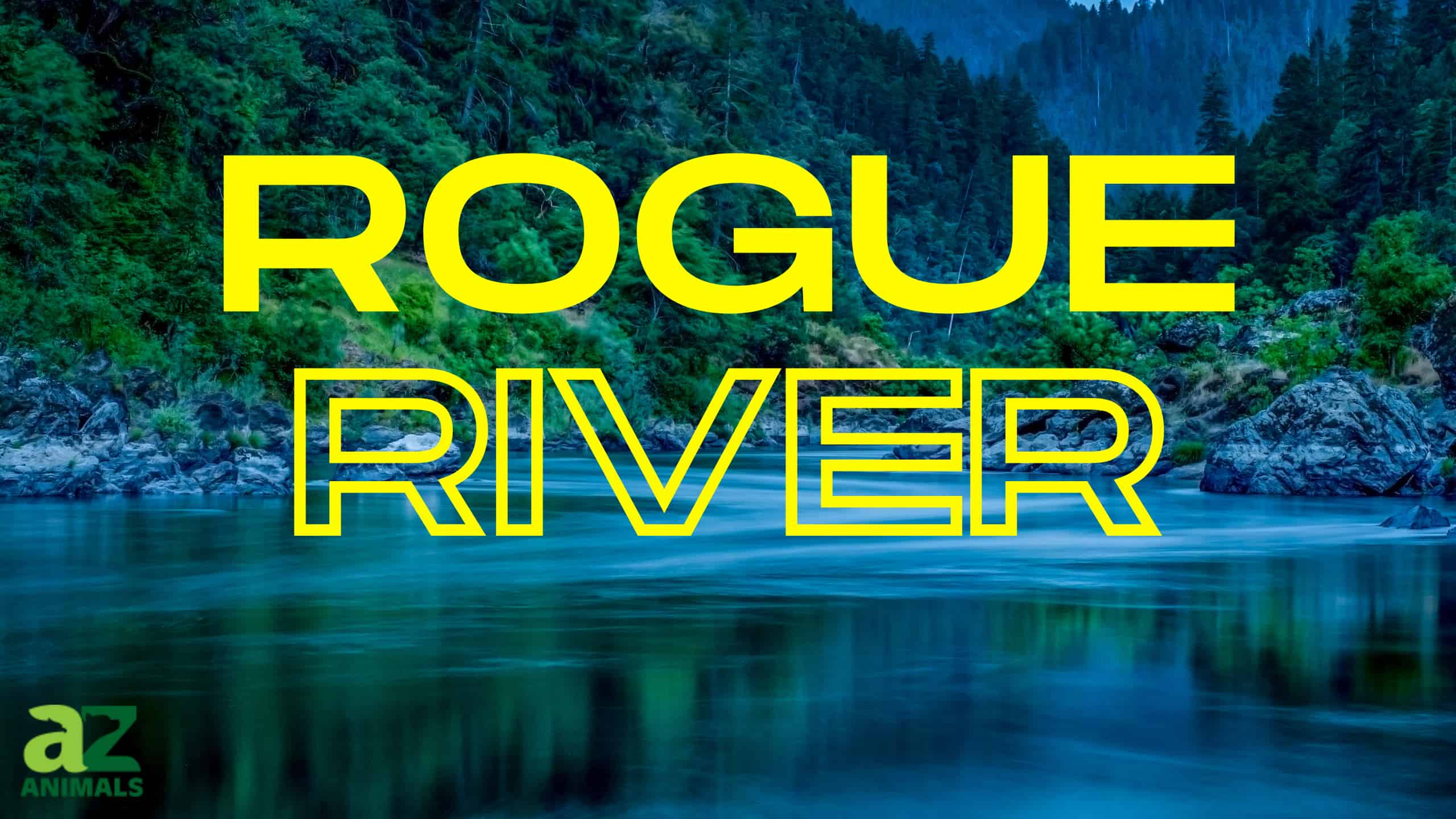The Rogue River is one of the longest rivers in the state of Oregon at 215 miles. How deep is the Rouge River? Its depths vary from 13 feet where the river meets the Pacific Ocean to 15-foot pockets along its path. However, the deepest spot is at Hellgate Canyon which measures 200 feet deep with an average depth of 136 feet. The river’s source starts high in the Cascade Mountains in southwestern Oregon. The terrain along the river varies as it meanders down its path with near-vertical cliffs, cascading creeks, and razor-sharp ridges surrounding it. And at one spot it completely disappears underground at Natural Bridge into a 250-foot lava tube.
All About the Rogue River
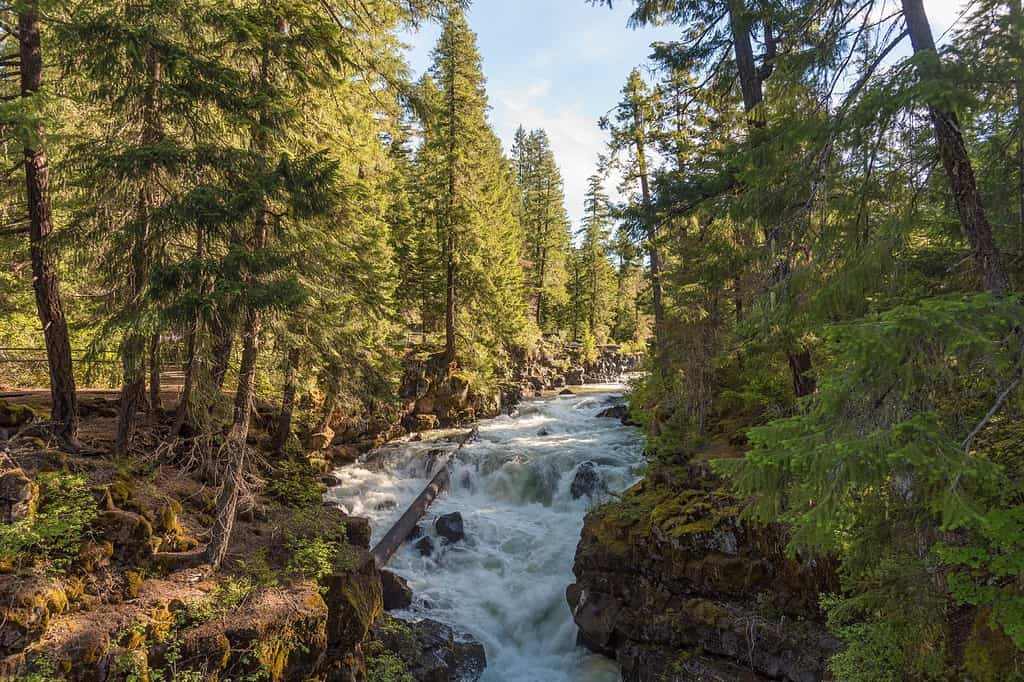
Over 70 million dollars in gold was panned from the Rogue River.
©Tristan Brynildsen/Shutterstock.com
Nationally known for its steelhead and salmon fishing, the Rogue River has a bigger story to tell. Earlier evidence of inhabitants here exists from more than 10,000 years ago. The first recorded non-native people came along in the 1800s lured by stories of pelts and gold resulting in over 70 million dollars in gold panned from the Rogue River. French fur trappers were responsible for naming the river La Riviere aux Coquins because they referred to the Native Americans as rogues (coquins.) At first, the fur trappers were friendly but that soon changed when they killed a couple of Native Americans. This and subsequent encounters resulted in the 1855-1856 Rogue River War.
To further populate the Oregon territory the 1850 Donation Land Act provided an attractive incentive of 640 acres of land for married couples and 320 acres for single men bringing more settlers here. Soon afterward, commercial fishing began in 1877 with the creation of a salmon cannery at the mouth of the river. As a result of overfishing it was banned in 1935 and the area soon became a popular sports fishing location.
Famous Visitors
Once popular with Hollywood celebrities such as Ginger Rogers and Clark Gable who visited the area in the 1930s. For example, popular movies filmed here include Butch Cassidy and the Sundance Kid and The River Wild. Famous novelist Zane Grey loved the Rogue River, his cabin here was constructed on an old mining claim, where he fished for trout, salmon, and steelhead. Indeed, the river inspired much of his writing.
Ecology of the River
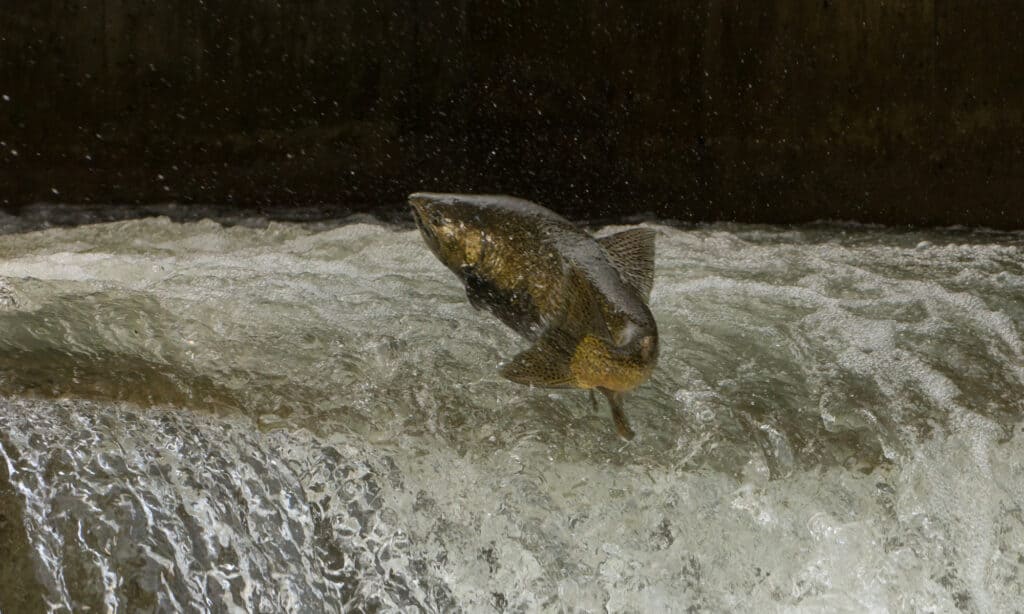
The chinook salmon is a popular sportsman’s fish.
©Evan Linnell/Shutterstock.com
A variety of fish species live in the river including green sturgeon, cutthroat trout, steelhead, coho salmon, and chinook salmon. Many other creatures who call this home are provided with a plentiful food source in the nearby river such as ospreys, great blue herons, green herons, mallards, and mergansers. There are also Canadian geese, Steller jays, woodpeckers, red-winged blackbirds, water ouzels, kingfishers, bald eagles, black-tailed deer, and North American black bears. And for those who are lucky Western turtles, river otters, river mink, golden eagles, and sometimes a seal near the Pacific Ocean are seen. While hiking, a glimpse of the elusive Artic Blue butterfly may appear. However, beware of rattlesnakes and ticks.
What is There to Do at the Rogue River?
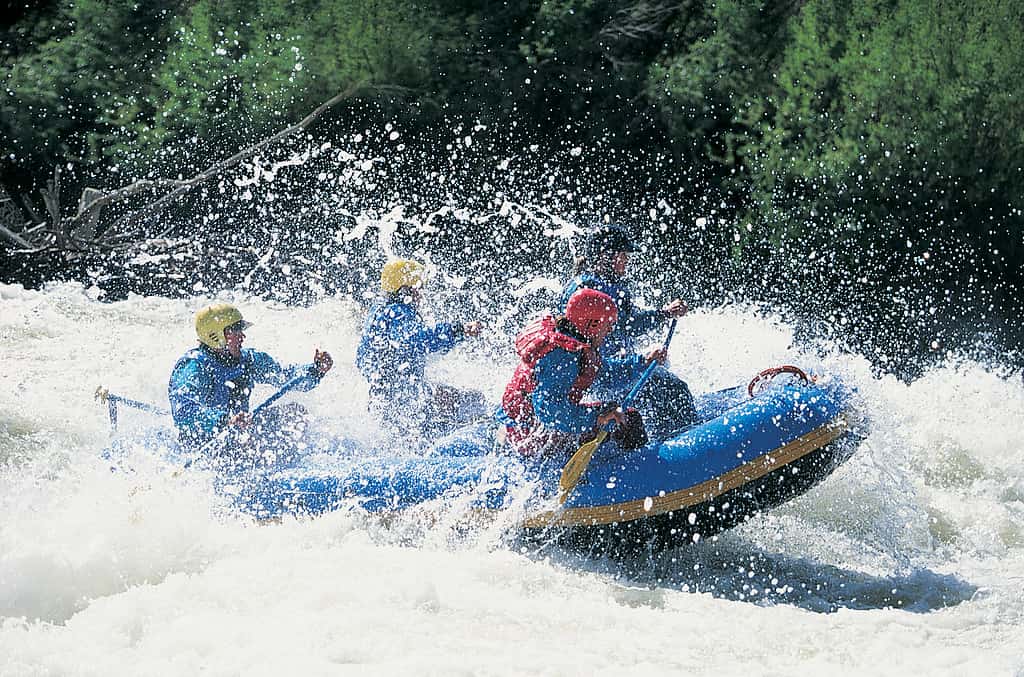
Experience white water rafting on the Rogue River.
©Digital Vision./Photodisc via Getty Images
Over half a million visitors come to the Rogue River annually because there are many activities to enjoy in this magnificent wilderness such as gold panning, swimming, flyfishing, kayaking, and canoeing. Hike the 40-mile Rogue River Trail and camp or backpack. In addition, take guided float trips, whitewater fishing, or motorized boat trips. One of the most exciting adventures here is white water rafting, book a single or multi-day excursion.
Nearby Rivers
There are many breathtaking nearby rivers, these are but two of them:
Umpqua River

Explore the 79-mile-long North Umpqua Trail.
©Nick Fox/Shutterstock.com
Sourced from the North and South Umpqua rivers near Roseburg they join to form the main river which flows 111 miles to the Pacific Ocean. This river offers prime fishing for salmon, steelhead, and sturgeon. Hike the 79-mile-long North Umpqua Trail made for hikers, bikers, and backpackers. Kayakers can tackle the 25 miles of rapids.
Columbia River
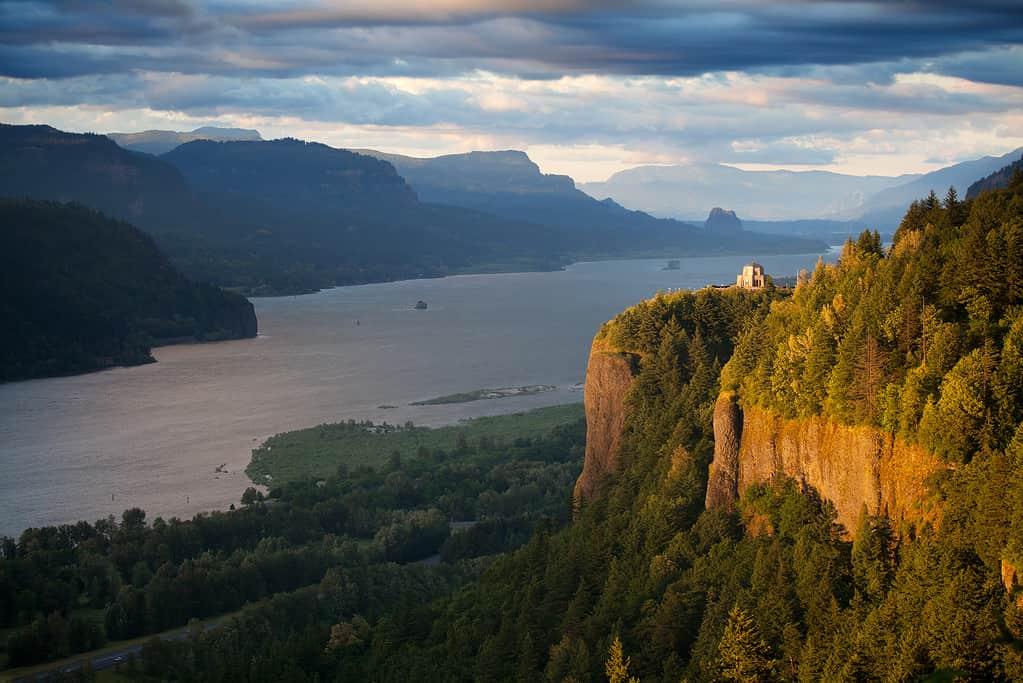
The Columbia River is the largest in the Pacific Northwest.
©alptraum/iStock via Getty Images
The Columbia River is the largest in the Pacific Northwest. At 1,243 miles long it covers seven states and one Canadian province. Beginning in the Canadian Rockies in British Columbia it is the seventh-longest river in the United States and varies between 400-750 feet deep. The river is renowned for its salmon and steelhead fishing.
Where is it?
The Rogue River flows through the southeastern part of the state beginning at Boundry Springs near Crater Lake National Park. Finally, it reaches the Pacific Ocean near the city of Gold Beach. Its three tributaries are the Illinois River, the Applegate River, and Bear Creek.
Thank you for reading! Have some feedback for us? Contact the AZ Animals editorial team.

